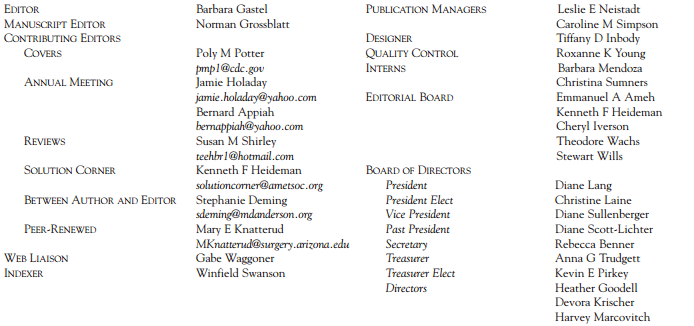As CSE enters 2010, it is settling into new headquarters and welcoming a new executive director (p 29). It is preparing for an annual meeting, to be held 14–18 May in Atlanta. And it is starting to plan for the eighth edition of its style manual.
What about 10, 20, 30, 40, and 50 years ago? Back issues of Science Editor and the periodicals of CSE’s forerunners offer a glimpse.
The January 1960 newsletter of the Conference of Biological Editors focused largely on the upcoming meeting of the group, established in 1957. Topics to be discussed included some that remain current (such as improving scientific writing and participating in international activities) and some that now are dated (such as whether to encourage publication of abstracts in Russian and how to evaluate an “experiment in microcard publication”). The newsletter urged readers to reserve hotel rooms immediately (rates: “$8.50, single; $12.50 for room with twin beds”).
In 1970, the organization had become the Council of Biology Editors, and it published the CBE Newsletter. The issues passed down to me include none from 1970. But a look at issues from 1969 gives a sense of the era. One theme was copyright and fair use with regard to “reprographic copies” of journal articles; another was page-charge practices and policies. Readers learned of the newly established CBE Award for Excellence in Scientific Communication (now called the CSE Award for Meritorious Achievement).
By 1980, the Council’s periodical had become the quarterly CBE Views. Articles included “Author’s Editors: Catalysts of Scientific Publishing” by Martha M Tacker and “Graduate Editorial Fellowships—An Idea Whose Time Has Come” by Bentley Glass. A news piece noted that the Ciba Foundation had published guidelines for producing camera-ready copy. Reports from the annual conference now appeared. It was announced that Philip L Altman had been named CBE executive secretary—a role he would occupy for a decade.
In 1990, CBE Views had become bimonthly. Content included a debate over controlled-circulation medical journals, reviews of books on desktop publishing, and many reports from the CBE annual meeting. Titles of the meeting sessions included “Economic Realities of Biomedical Publishing—Who Will Survive the Nineties?”, “Fright-Free Fee Fixing for Financially Frustrated Freelancers”, and “Effective Slide Design”. Given the era, the slides discussed were 33 mm, not PowerPoint; much of the advice, though, remains applicable.
In January 2000, CBE became CSE—and the first issue of Science Editor appeared. Included were an article on the history of the Council’s periodicals, a column on humorous sentences in medical manuscripts, and an announcement that Seth Beckerman had become CSE Web editor. (Thanks, Seth, for all your help over the years!) Given technological advances during the decade, readers can look online at all Science Editor content from the last 10 years.
And now the January–February 2010 issue is before you. What about 2020, 2030, and beyond? The answer may be up to you.
Barbara Gastel
Editor, Science Editor
b-gastel@tamu.edu

